Underwater Communication
There are several ways for underwater vehicles (ROV’s, UAV’s) and divers to communicate underwater. However, acoustic modems stand out for their ability to transmit data over long distances, overcoming the limitations of other methods. Ideal for ROVs, AUVs, and divers, they ensure reliable, real-time communication in the most challenging marine environments.
Underwater communication methods
All underwater communication methods have different advantages and disadvantages. Here is a table that gives you an overview of the different subsea communication methods:
| Method | Range | Data Rate | Applications | Limitations |
| Acoustic Modems | Long | Medium | General-purpose underwater comms | Can be affected by water noise, speed of sound |
| Optical Communication | Short | High | High-bandwidth, short-range comms | Can be affected by water clarity |
| Electromagnetic Waves | Medium | Low | Submarine comms, sensor networks | Low data rates, high power consumption |
| Through-Water Radio | Medium | Very Low | Submarine comms, emergency signals | Requires large antennas, low data rates |
| Hydrophone/Speaker | Short | Low | Diver comms, simple ROV control | Limited data capability |
| Tethered Communication | Very Long | Very High | ROV ops, tethered divers | Limited mobility, risk of entanglement |
| Inductive Coupling | Very Short | Very Low | Short-range data transfer | Very short range, limited data rates |
The versatile, reliable acoustic modem
The most significant advantage of acoustic modems over other underwater communication methods is their ability to transmit data over long distances in water, where different signals like optical and electromagnetic waves are limited.
Acoustic modems provide reliable communication in environments with challenging conditions. They are also versatile, supporting various applications from navigation to data collection and remote control. This makes them essential for most underwater communication needs.
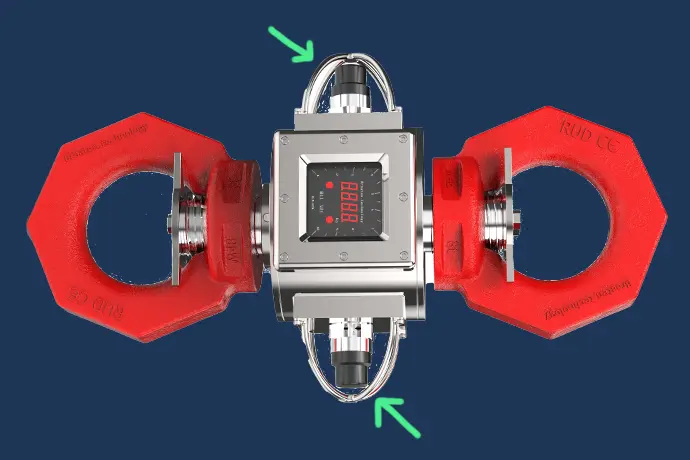 Photo courtesy of Braatten Technology
Photo courtesy of Braatten TechnologyHow do acoustic modems work?
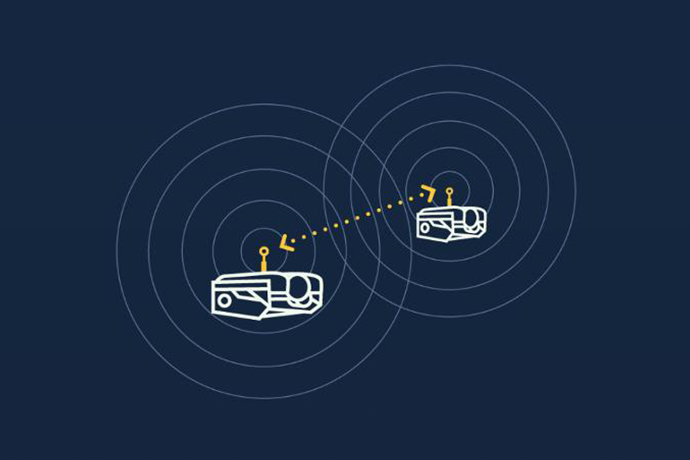
In essence, acoustic modems allow devices to "talk" to each other underwater using sound waves, enabling communication where traditional radio waves can’t be used effectively. Here's how it works:
1: Converting Data to Sound
The modem takes digital data (like text, commands, or sensor readings) and converts it into sound waves. This process is similar to how a phone modem converts digital data into sound signals that can travel over phone lines.
2: Transmitting Sound Waves
The modem sends these sound waves through the water. Since sound travels well underwater, it’s an effective way to communicate over distances.
3: Receiving Sound Waves
Another acoustic modem picks up the sound waves and converts them back into digital data.
4: Processing the Data
The receiving modem processes the sound waves to extract the original data, which can then be used by underwater vehicles, sensors, or other devices.
Key applications of acoustic modems
Research and Monitoring
Acoustic modems transmit data from underwater sensors and instruments to surface buoys or vessels. This is essential in oceanographic research, environmental monitoring, and habitat mapping. Acoustic modems enable AUVs to send collected data back to researchers in real-time or at intervals, ensuring continuous data flow.
Navigation and Positioning
Acoustic modems facilitate communication between ROVs/AUVs and surface operators, allowing for precise navigation and control. This includes sending positioning data and receiving commands. Acoustic modems are also integral to underwater GPS systems, transmitting positioning signals between transponders and vehicles.
Communication Networks
Acoustic modems are used to create networks of underwater sensors that can communicate with each other and with surface stations. This is crucial for large-scale monitoring and data collection efforts. Modems also facilitate communication in search and rescue operations, allowing divers and underwater vehicles to stay connected with the command center.
Command and Control
Acoustic modems allow operators to remotely control and monitor underwater infrastructure such as oil rigs, pipelines, and subsea equipment. In marine robotics, they enable the transmission of control commands and the reception of status updates, ensuring the effective operation of underwater robots.
The Watbots in the video on the left, for example, have Water Linked's Modem M16 integrated in their design. Watbots' autonomous robots aim to address two of the biggest environmental issues in the fish farming industry: algae growth and autonomous net inspection to prevent fish from escaping.
Research and Monitoring
Acoustic modems are used to transmit data from underwater sensors and instruments to surface buoys or vessels. This is essential in oceanographic research, environmental monitoring, and habitat mapping. Acoustic modems enable AUVs to send collected data back to researchers in real-time or at intervals, ensuring continuous data flow.
Navigation and Positioning
Acoustic modems facilitate communication between ROVs/AUVs and surface operators, allowing for precise navigation and control. This includes sending positioning data and receiving commands. Acoustic modems are also integral to underwater GPS systems, transmitting positioning signals between transponders and the vehicles.
Which sectors are using acoustic modems?
Environmental Monitoring
Acoustic modems facilitate long-term environmental monitoring, allowing continuous data transmission from underwater sensors to researchers studying climate change, pollution, and marine ecosystems.
Search and Rescue
During underwater search and rescue missions, acoustic modems enable communication between divers, ROVs, and the surface team, ensuring coordinated and effective operations.
Marine Research and Exploration
Oceanographic surveys, marine biology research, and habitat mapping rely heavily on acoustic modems for data communication and real-time monitoring.
Energy
In the energy sector, acoustic modems monitor and control subsea infrastructure, ensuring safety and efficiency in underwater operations.
Defense
Naval operations use acoustic modems for communication between submarines, underwater drones, and surface ships, enhancing situational awareness and coordination.
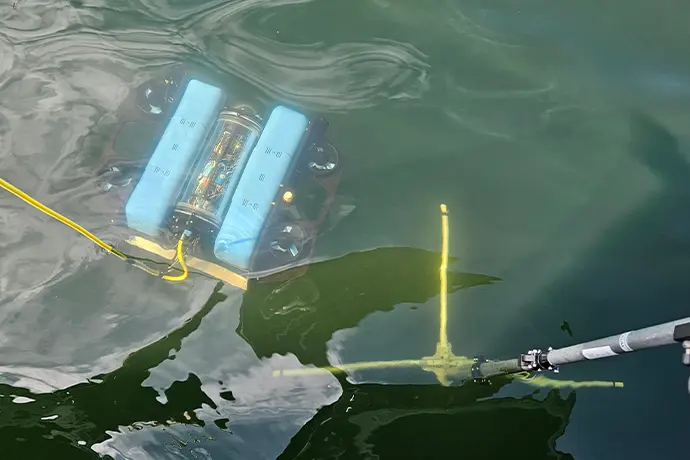
Water Linked's Modem M16
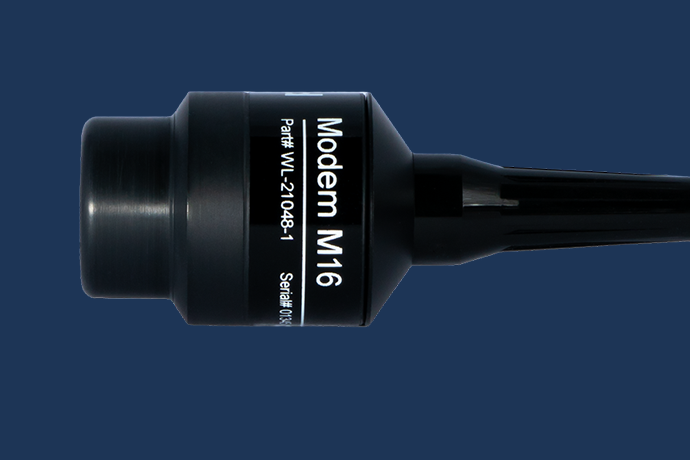
Water Linked's Modem M16 enhances ROV and AUV operations with reliability and robustness. By prioritizing reliability over data rate, its design ensures consistent communication even in difficult conditions, such as varying salinity, temperature fluctuations, and moderate turbidity.
Thanks to advanced signal processing, the M16 is built to handle environments with background noise and multipath propagation. By focusing on reliability, the Modem M16 excels in scenarios where stable communication is critical, making it an ideal choice for demanding underwater applications.
The best choice for when you need reliable, minimal underwater communication
Our Modem M16 is tiny, lightweight and ensures stable low data rate communication, withstanding harsh underwater conditions, and is easily integrated into ROVs and AUVs for a wide range of missions.
The modem transmits critical data, position updates, and alerts while conserving energy, making it suitable for long missions, military operations, and emergency situations. This enables ROVs and AUVs to perform essential tasks effectively while ensuring communication reliability and extended operational periods.
Product features
Small size
Our sensors are all developed to fit on small vehicles as well as bigger ones, without compromising performance.
Light weight
Lightweight sensors allow fitment on lighter vehicles, and leave you with excess payload capacity for other equipment.
Low power consumption
Our smart, proprietary technology leaves more power for your other devices or can help free up payload capacity due to requiring
smaller battery packs.
"Water Linked’s agility in addressing our needs ensures seamless integration and operational efficiency. Their team is always available to provide prompt and effective support. We also value the personal touch that fosters a relationship grounded in mutual respect and trust.
"
- Cody Warner, Director of Sales and Marketing, Deep Trekker
Product options
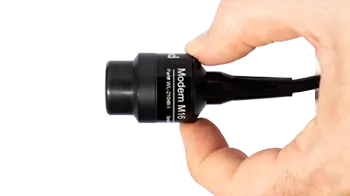
Customer stories
